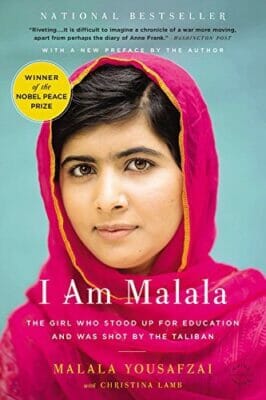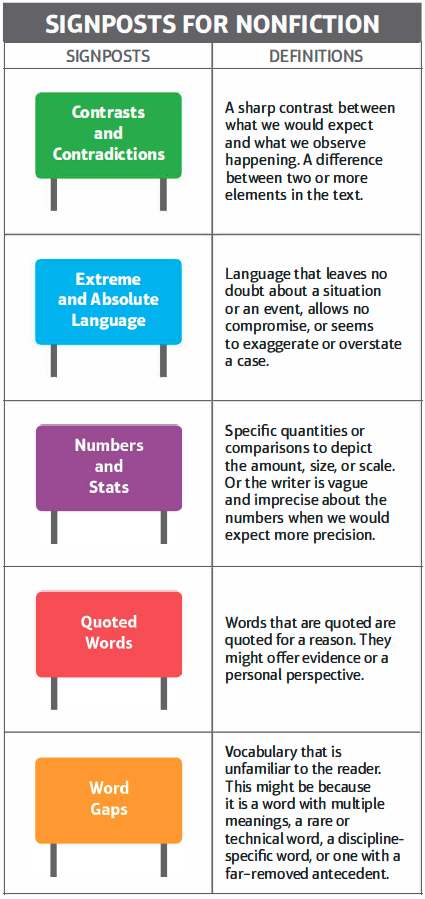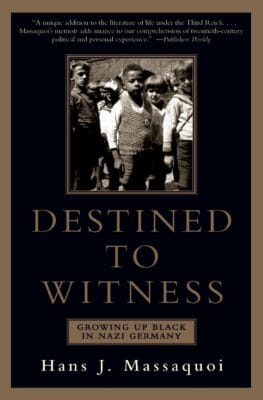Upper School Summer Reading
History & Social Sciences Summer Reading
Welcome! Please select your History/Social Science course for the 2024-2025 school year to view more information about the summer reading assignment.
The reading that you do over the summer will serve as an introduction to the course and provide a foundation from which the course is built. It is highly recommended that you break the reading up rather than attempt to do it in one sitting. In addition, as you read, you should annotate or take notes. You are responsible for the reading on the first day of class, and may be assessed on it at that point. If your History/Social Sciences course is not listed, there is no summer reading or work for that course.
If you have any questions, please contact Carla Federman, History/Social Sciences Department Chair, at cfederman@micds.org.
Post-1900 World
- The Post-1900 World (9th Grade)
Welcome to ninth-grade history!
 Before school begins, all incoming ninth-grade students must read Malala Yousafzai’s I am Malala: The Girl Who Stood Up for Education and was Shot by the Taliban. Please make sure you purchase the Adult (not Young Adult) version.
Before school begins, all incoming ninth-grade students must read Malala Yousafzai’s I am Malala: The Girl Who Stood Up for Education and was Shot by the Taliban. Please make sure you purchase the Adult (not Young Adult) version.The book will be available at the MICDS bookstore and on Amazon; local bookstores can also order it by request.
When the school year begins, you will be asked to work with the reading further, so come prepared to talk about what you’ve read, analyze the author’s work, and apply your knowledge in new ways.
One strategy as you read: write a 2-3 sentence summary of each chapter at the end of it.
We look forward to exploring the modern world with you in the months ahead!
US History (Non-Accelerated)
- United States History (10th Grade)
Welcome to United States History!
The 10th grade U.S. History course combines a chronological survey with several thematic units to best understand the main ideas and events that have shaped this country. Throughout the year, we will explore American history from a variety of perspectives and think critically about how we learn from the past. As part of this aim, the summer reading assignment is designed to help you begin to understand the concept of historiography, how and why historians investigate, interpret and present evidence the way that they do in order to create a picture of what has happened. You will read and explore several chapters and websites on the same topic: early interaction between European explorers and the indigenous populations in the Americas. These sources have been specifically selected to include varying interpretations (some could be considered controversial and we are aware of that) of historical events. Additionally, one of the readings, compiled by Kyle Ward, is a series of textbook entries from different time periods to show how our understanding and representation of history and people has changed over time. Please note that in this reading, the language is representative of the time and not of the language that is acceptable today. The intent is that as you read you should identify the different stances that historians have taken and ask questions as to why the author chose to present the information the way that they did. PDFs for all required chapters are linked below (if you are interested in a particular book you are welcome to purchase it, but that is not necessary).
Read/Review the sources in the order listed below. You are encouraged (not required) to complete this Notes Organizer to keep a record of your thinking as you read:
- Benjamin, Jules R. “Historiography.” A Student’s Guide to History. 14th ed. Boston: Bedford/St. Martin’s, 2019. (PDF)
- CUNY. „Historiography.“ Writing on History. https://qcpages.qc.cuny.edu/Writing/history/critical/historiography.html. (link)
- Ward, Kyle. History in the Making: An Absorbing Look at How American History Has Changed in the Telling over the Last 200 Years. New York: New Press, 2007. Chapter 1: “Native American Relations with the New Settlers” & Chapter 3: “Columbus’ Landing in the New World.” PDF. Full Book Available for Purchase on Amazon
- Loewen, James W. Lies My Teacher Told Me: Everything Your American History Textbook Got Wrong. New York: Simon & Schuster, 2007. Chapter 2: “1493: The True Importance of Christopher Columbus.” PDF. Full Book Available for Purchase on Amazon
- Schweikart, Larry, and Michael Allen. A Patriot’s History of the United States: From Columbus’s Great Discovery to America’s Age of Entitlement. 15th ed. New York: Sentinel, 2019. Excerpt From Chapter 1: “The City on the Hill, 1492-1707” (pages 1-12). PDF. Full Book Available for Purchase on Amazon
- Zinn, Howard. A People’s History of the United States: 1492-present. 3rd ed. Milton Park, Abingdon: Routledge, 2013. Chapter 1: “Columbus, the Indians, and Human Progress.” PDF. Full Book Available for Purchase on Amazon
- Pick TWO images from the following websites to consider with the readings above.
- Dr. Lauren Kilroy-Ewbank. „Inventing “America.” The Engravings of Theodore de Bry,“ in Smarthistory. May 18, 2019. https://smarthistory.org/engravings-theodore-de-bry/. (LINK)
- Jamie Lathan. The Columbian Exchange. 2017. Retrieved from the Digital Public Library of America, https://production.dp.la/primary-source-sets/the-columbian-exchange. (LINK)
- „Native American Representation.“ Architect of the Capitol. https://www.aoc.gov/explore-capitol-campus/art/native-americans-in-art. (LINK)
Students should be prepared for an assessment on their summer reading when school begins in August. It might be a good idea to print and annotate these readings, and complete the Notes Organizer, as students will be expected to bring a digital or hard copy of these texts to class on the first day back. As you read, you might want to consider the following questions:
- What did you already know about the early interaction between European explorers and the indigenous populations in the Americas? What were you expecting the readings would be about before reading them? What surprised you after having read them, and why?
- What evidence/events does the author/source focus on? How does this compare to other authors/sources? What is included by all of the sources? What is included in only one or two? What things seem to be left out?
- How do different authors/sources portray the Europeans? How do they portray the indigenous populations? Are there similarities, differences, why might this be the case?
- How does the time that a particular account was published impact the way in which events are depicted?
- Why is it important to read more than one account of the same thing?
- Can historians be biased? Why do you think that a specific author/source made the choices that they did?
- If you were to now write a textbook entry, how would you explain what happened when the Europeans arrived in the Americas?
*If you have any questions about this assignment, please reach out to the Department Chair, Carla Federman (cfederman@micds.org).
US History Accelerated
- United States History Accelerated (10th Grade)
Welcome to Accelerated 10th Grade History!
To prepare for our year together, please complete the following assignments. You should complete the reading and listening AND have good notes prior to the first day of school. Contact Dr. Tanya Roth (troth@micds.org) if you have any questions.
- Read and Annotate Jill Lepore’s The Story of America: Essays on Origins. You must read the Introduction and Chapters 1-3, plus any ONE additional chapter of your choice. Be prepared to discuss and write about your selected chapter when school starts in the Fall. The Story of America is available on Amazon or in the MICDS Bookstore. Bring your copy to class on the first day of school. Before you read, review the „How to Read Nonfiction“ guide located at the bottom of this page.
- Listen to American History Hit, Episode 62, Cahokia: The Medieval Mississippian City (42 minutes). Write down 2 things that you learned (be specific!) and 1 question that you would ask the host/guests (not something that you could google!).
- Listen to Ben Franklin’s World: Episode 290, The World of the Wampanoag, Part 1: Before 1620 (47 minutes). Write down 2 things that you learned (be specific!) and 1 question that you would ask the host/guests (not something that you could google!).
- OPTIONAL: Listen to or Watch the Original Broadway Cast recording of Hamilton: An American Musical. You can purchase the album on iTunes, or listen to it cost-free on Spotify, or you can watch the full musical on Disney+. Make sure that you listen to the songs in order, as they tell a chronological story.
 How to Read Nonfiction:
How to Read Nonfiction:When reading nonfiction, like These Truths or other history texts, remember that nonfiction is a type of writing that asks you to engage as a reader.
It’s not enough to just put your eyes on the page: your brain and hands must also engage!
The signposts at right are things you should look for as you read; these six signposts are things you will commonly find in a nonfiction text that will help you find important points in the reading.
Additionally, ask yourself these three questions as you read:
-
What surprised me?
-
What did the author think I already knew?
-
What changed, challenged, or confirmed what I already knew about this?
How to Annotate Nonfiction
- Annotate with a Question Mark when you find something that you don’t know or understand – perhaps something the author assumed you already knew.
- Annotate with an exclamation point when you find something that surprises you.
-
Annotate with the letter „C“ when you find something that:
-
Changed your thinking on this topic
-
Challenged your thinking on this topic
-
Confirmed what you already knew on this topic
-
History of St. Louis
- History of St. Louis (11th Grade)
Welcome to History of St. Louis!
This summer, you will be examining a collection of sources to help you understand more about current-day St. Louis (a total of 13 assigned articles at roughly total 100 pages, plus two videos and a last article of your choice). Please read the articles in the order that they are listed (PDFs are provided for sources that require a log-in; for all others, you should visit the websites as there are interactive maps and charts), and then explore the video options and choose your own additional piece. As you read, you should jot down a few notes on each article, as we’ll be discussing them and you’ll complete a writing assignment using them during the first few days of school; if you’d like, you are welcome to use this organizer, but you must do your own work, and cannot share organizers. Over the course of the semester, we’ll then be examining the history of St. Louis in order to better understand its current state.
The following article provides an introduction to the idea of Urban Studies and the concept of cities. As you read, look for passages that might resonate with what you know about St. Louis.
1. Issitt, Micah L. Preface. The Transformation of American Cities, Grey House Publishing, 2015, pp. ix-xiii. PDF
Explore St. Louis has put together a guide of significant sites in STL. Take note of which you have been to, which you didn’t know about, and which seem the most significant.
2. Explore St. Louis. Historic St. Louis. Last modified 2024. Accessed April 8, 2024. https://explorestlouis.com/guide/historic-st-louis/.
When we talk about “St. Louis,” do we mean the city, the county, or both? The following article provides some historical context around the “Great Divorce” that led to St. Louis’ distinctive political division between St. Louis City as well as the dozens of different municipalities of St. Louis County.
3. Cooperman, Jeanette. „St. Louis‘ Great Divorce: A complete history of the city and county separation and attempts to get back together.“ St. Louis Magazine, March 8, 2019. Accessed April 8, 2024. https://www.stlmag.com/news/politics/st-louis-great-divorce-history-city-county-split-attempt-to-get-back-together/.
There are certainly issues in the region. The following articles detail some of the challenges that the St. Louis area faces, both as a whole and for individuals.
4. Hamdan, Lara. „What the 2020 census tells us about St. Louis‘ changing demographics.“ St. Louis Public Radio. Last modified November 13, 2023. Accessed April 8, 2024. https://www.stlpr.org/government-politics-issues/2023-10-16/what-the-2020-census-tells-us-about-st-louis-changing-demographics.
5. Balko, Radley. „How Municipalities in St. Louis County, MO., Profit from Poverty.“ The Washington Post, September 3, 2014. Accessed April 8, 2024. http://www.washingtonpost.com/news/the-watch/wp/2014/09/03/how-st-louis-county-missouri-profits-from-poverty/?utm_term=.b1ba42a354a3. PDF
6. Perry, Andre M., Anthony Barr, and Carl Romer. „How Black leaders are pursuing racial equity in St. Louis.“ Brookings. Last modified September 13, 2021. Accessed April 8, 2024. https://www.brookings.edu/articles/how-black-leaders-are-pursuing-racial-equity-in-st-louis/.
7. Putzier, Konrad. “The Real Estate Nightmare Unfolding in Downtown St. Louis.” The Wall Street Journal, April 9, 2024. Accessed April 25, 2024. https://www.wsj.com/real-estate/commercial/doom-loop-st-louis-44505465. PDF
However, recently, there have been several causes for optimism about the St. Louis area. The following articles detail some of the aspects of the region that lead to that sense of optimism (the first is a direct response to Konrad Putzier’s article above):
8. Smith, Steve. “We can Change Perception of Downtown Highlighted by Wall Street Journal.” St. Louis Business Journal, April 16, 2024. Accessed April 25, 2024. https://www.bizjournals.com/stlouis/news/2024/04/16/downtown-wsj-change-perception-steve-smith.html. PDF
9. Snelling, Grace. „Major Projects Shaping St. Louis.“ St. Louis Magazine, January 26, 2024. Accessed April 8, 2024. https://www.stlmag.com/business/projects-shaping-st-louis/.
10. Wimbley, Lacretia. St. Louis Crime is at its lowest in the past decade. Experts say the reasons are unclear. St. Louis Public Radio. Last modified January 5, 2024. Accessed April 8, 2024. https://www.stlpr.org/law-order/2024-01-05/st-louis-crime-is-at-its-lowest-in-the-past-decade-experts-say-the-reasons-are-unclear.
Looking to the future, a variety of proposals have been made to build on successes while continuing to work to improve the region. The following articles present possible options for St. Louis:
11. Landis, Kelsey. „Merger Talks? St. Louis officials open to reuniting city and county.“ St. Louis Post-Dispatch, November 28, 2022. Accessed April 8, 2024. https://www.stltoday.com/life-entertainment/local/wellness/merger-talks-st-louis-officials-open-to-reuniting-city-and-county/article_d4e86c9f-da67-5a71-8973-a344af0ae524.html. PDF
12. Hays, Gabrielle. „How St. Louis is approaching the question of reparations for Black citizens.“ PBS Newshour, February 13, 2023. Accessed April 8, 2024. https://www.pbs.org/newshour/nation/how-st-louis-is-approaching-the-question-of-reparations-for-black-citizens.
13. City of St. Louis. Roadmap to Economic Justice. By St. Louis Development Corporation and Office of the Mayor of St. Louis. April 2022. Accessed April 8, 2024. https://www.stlouis-mo.gov/government/departments/sldc/documents/upload/Roadmap-to-Economic-Justice-20220425.pdf.
When we think about St. Louis, we think about the region as a whole, but also about what it is like to live and work in this area, and our own individual experiences. Below are 6 student-created video profiles about different elements of the city that focus on an individual perspective.
14. Choose 2 to watch, and as you do, think about what story these individuals are telling.15. Lastly, find one additional article from the last two years that helps add to your understanding of what some of the current assets and challenges are for the city.
WWII
- World War II (11th & 12th Grades)
Welcome to World War II!
Over the summer, all students taking World War II should read Hans Massaquoi’s Destined to Witness: Growing up Black in Nazi Germany, which can be purchased from the campus bookstore or online.

 Before school begins, all incoming ninth-grade students must read Malala Yousafzai’s I
Before school begins, all incoming ninth-grade students must read Malala Yousafzai’s I
